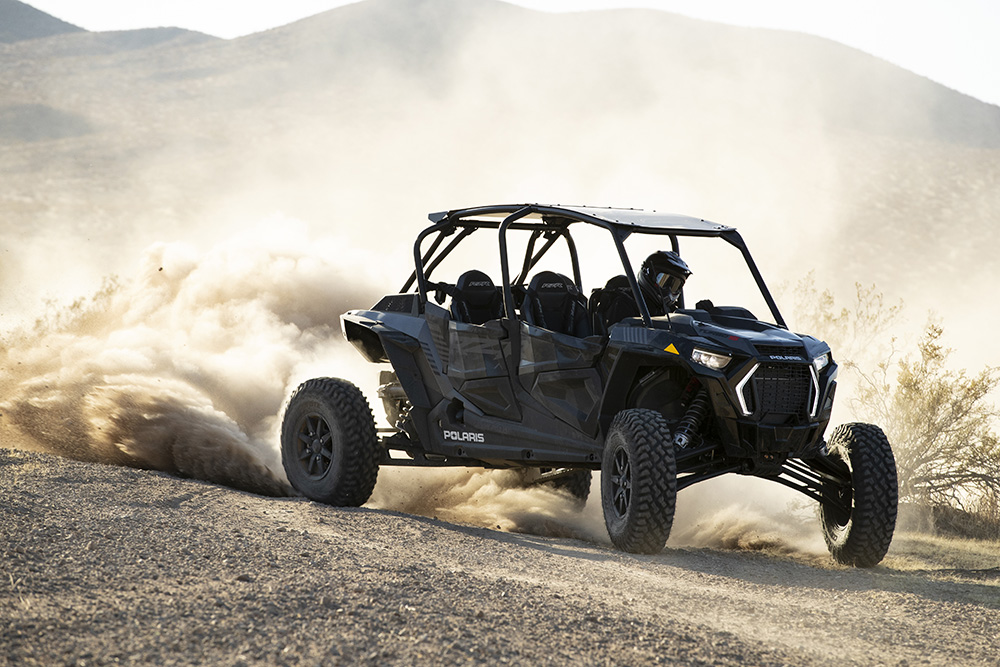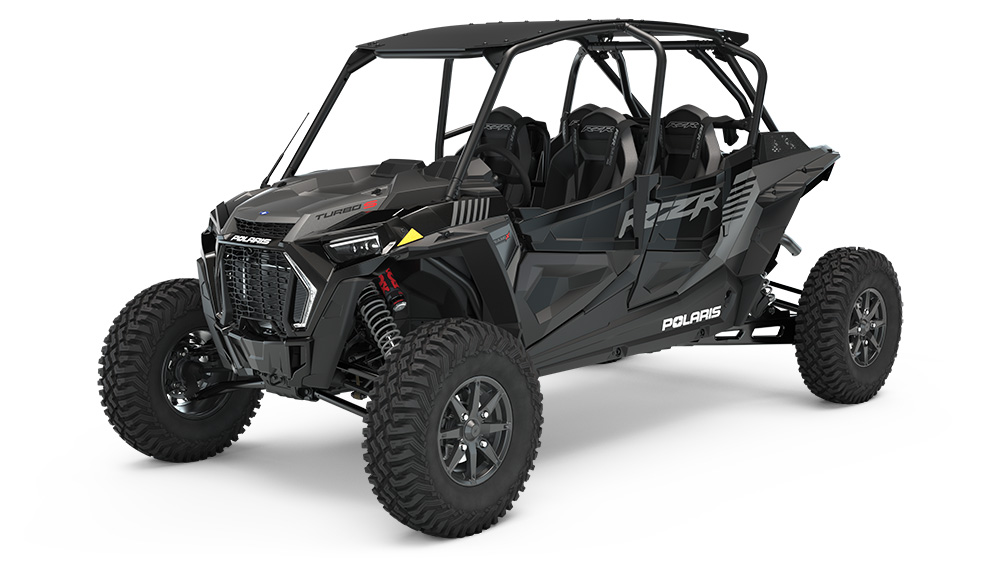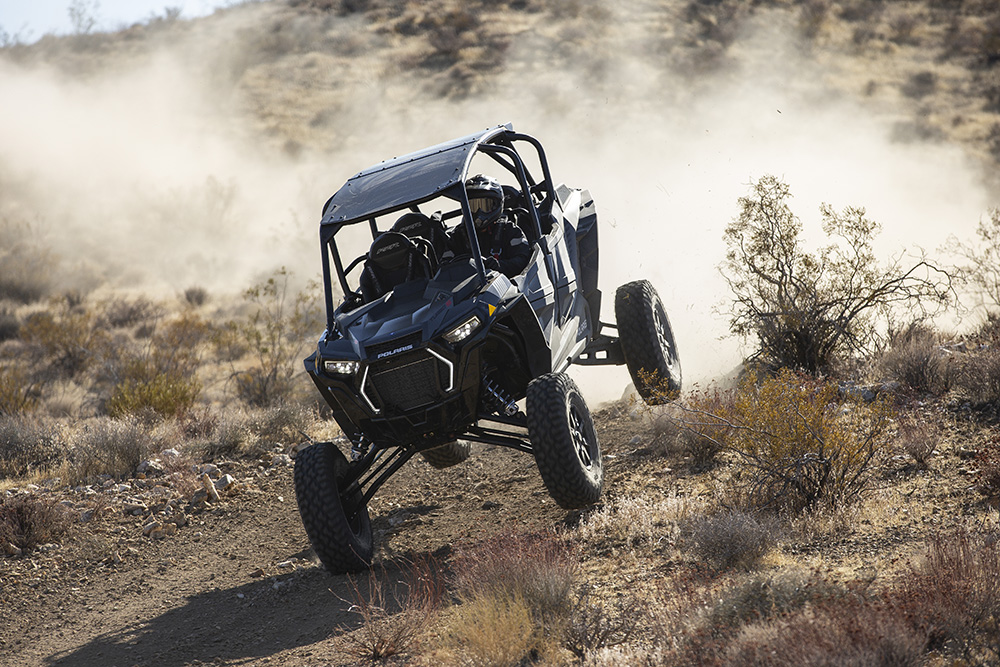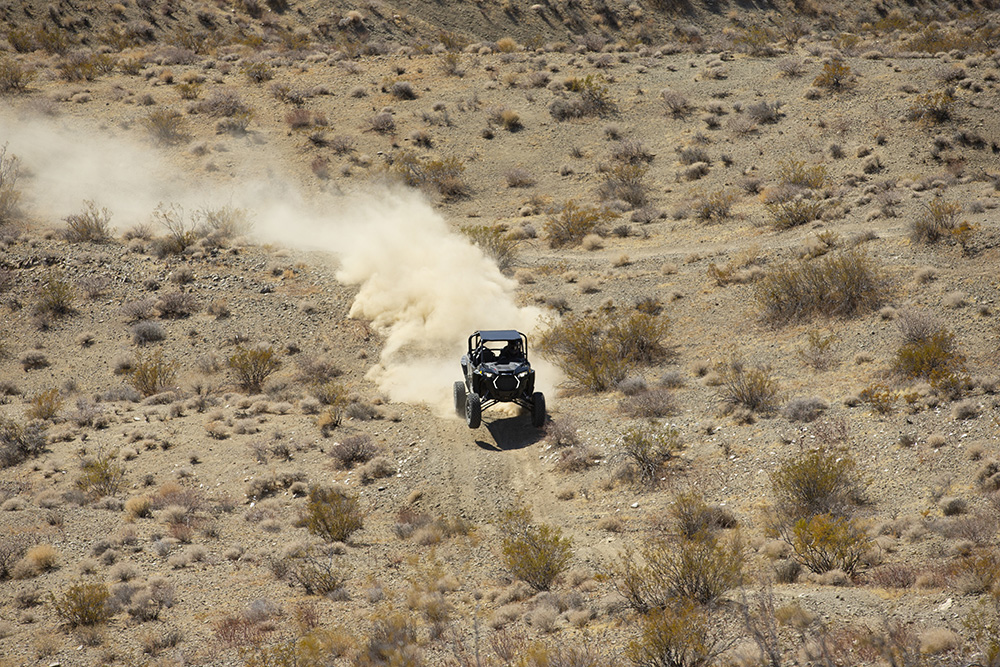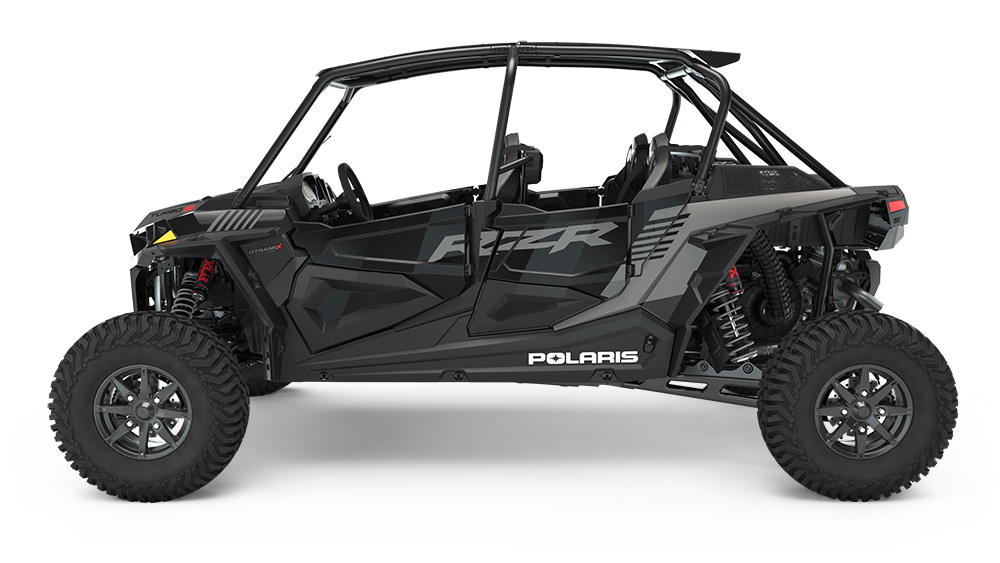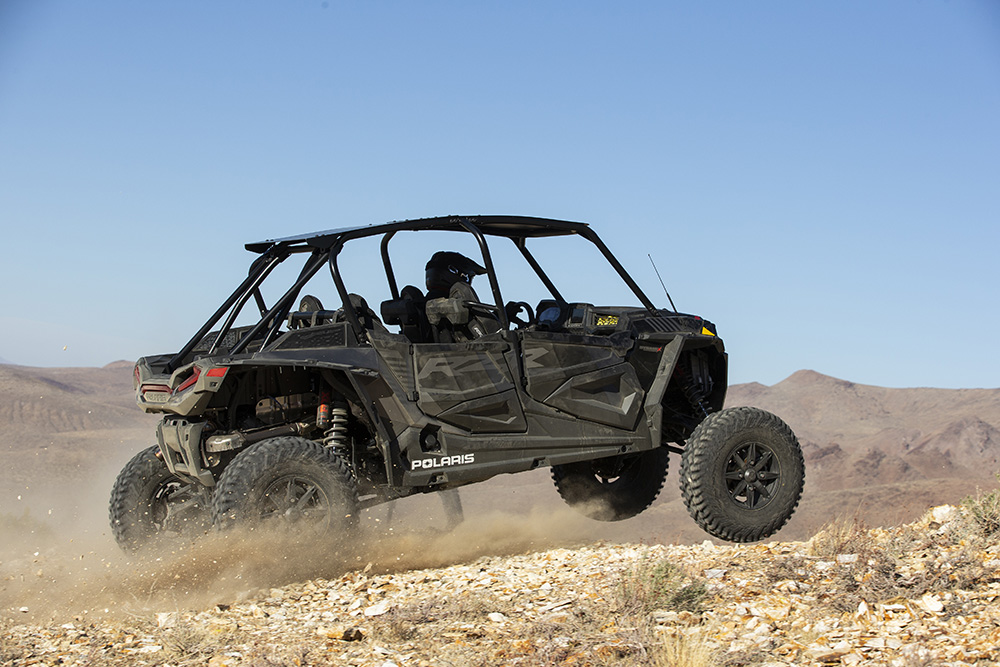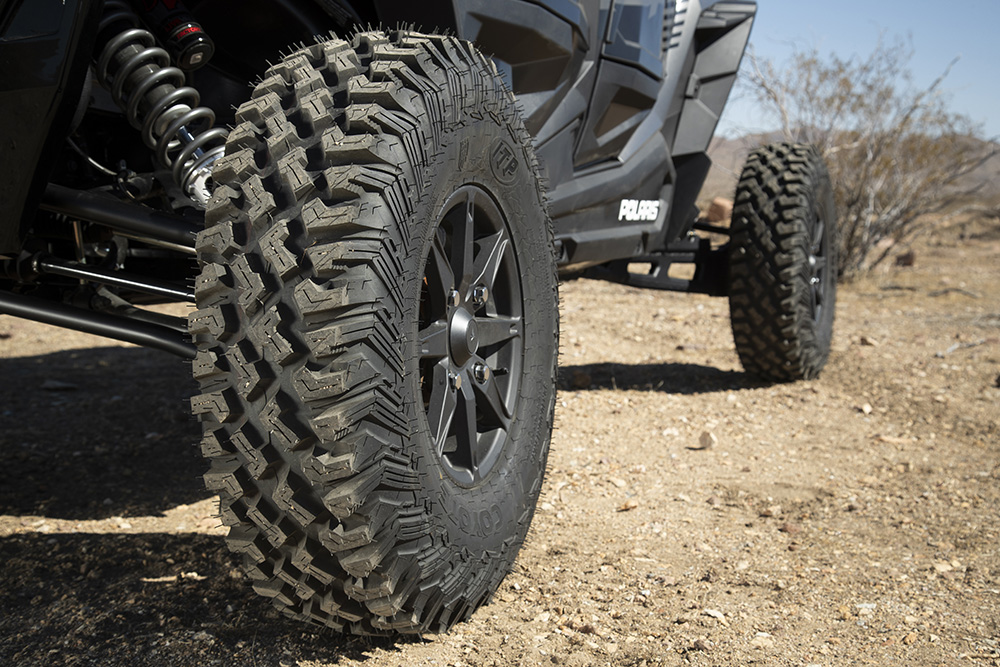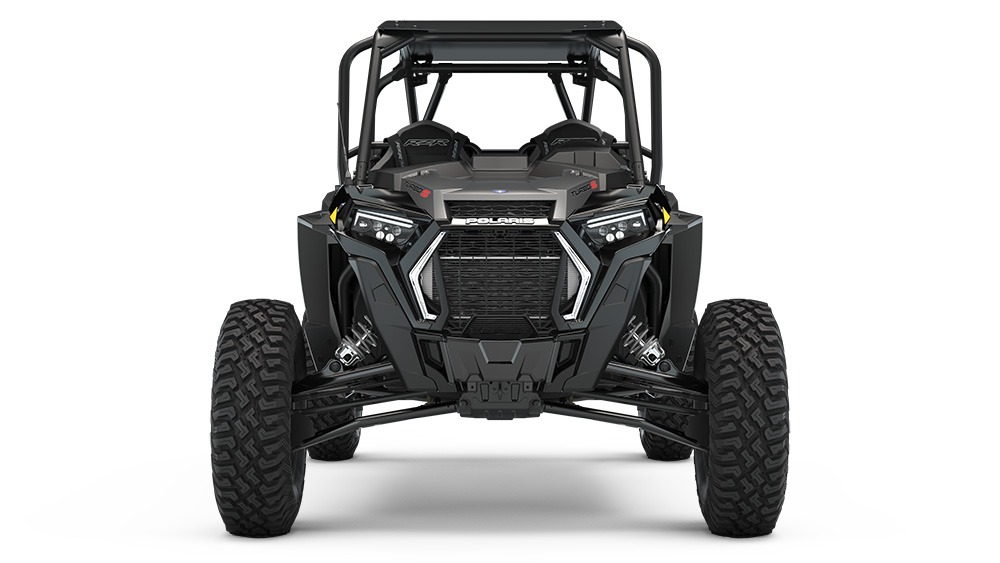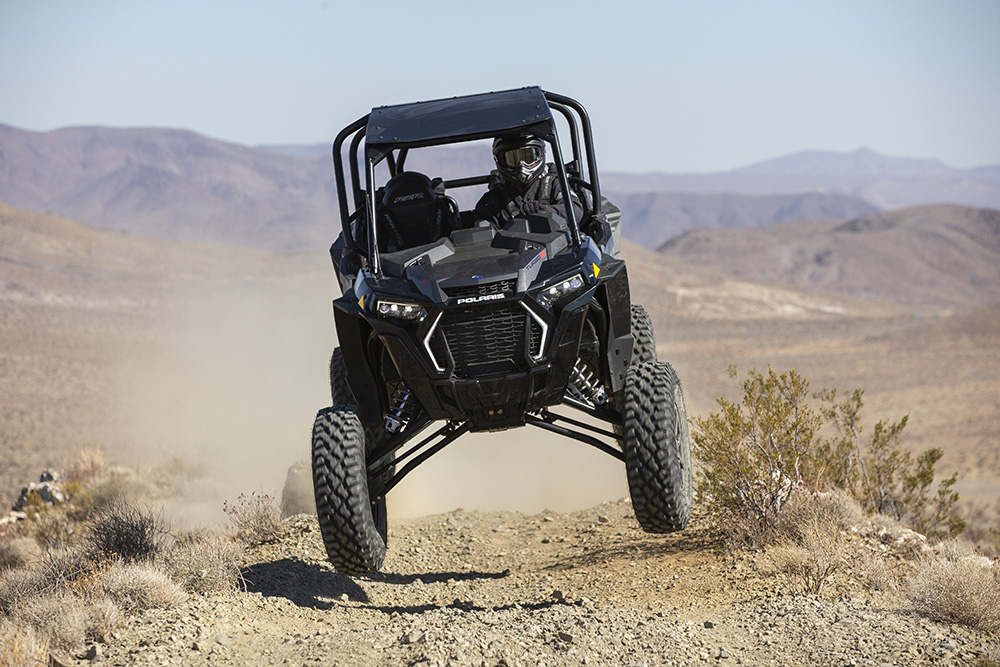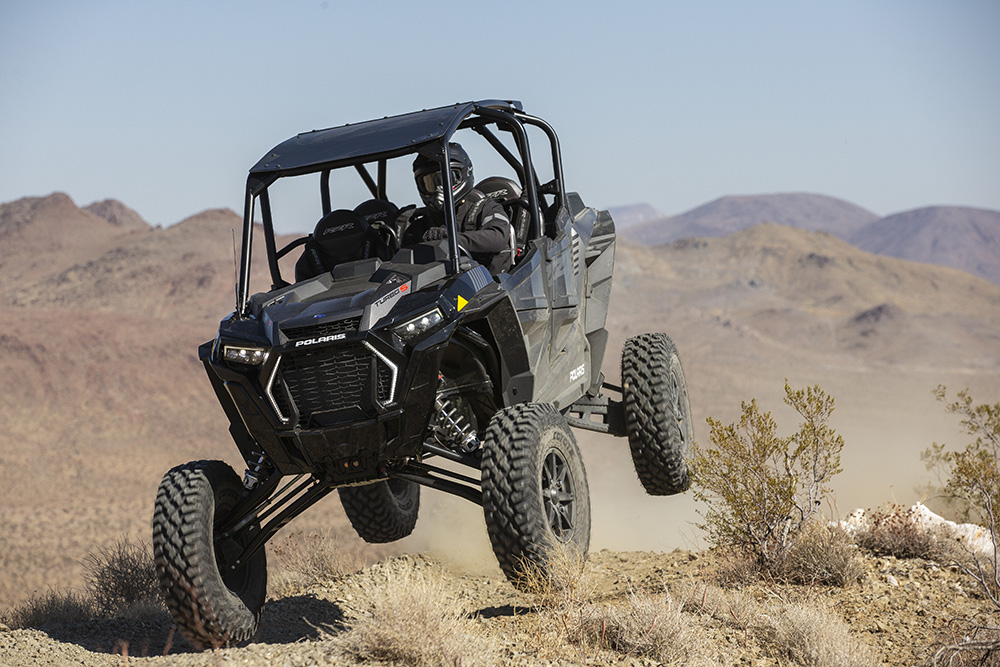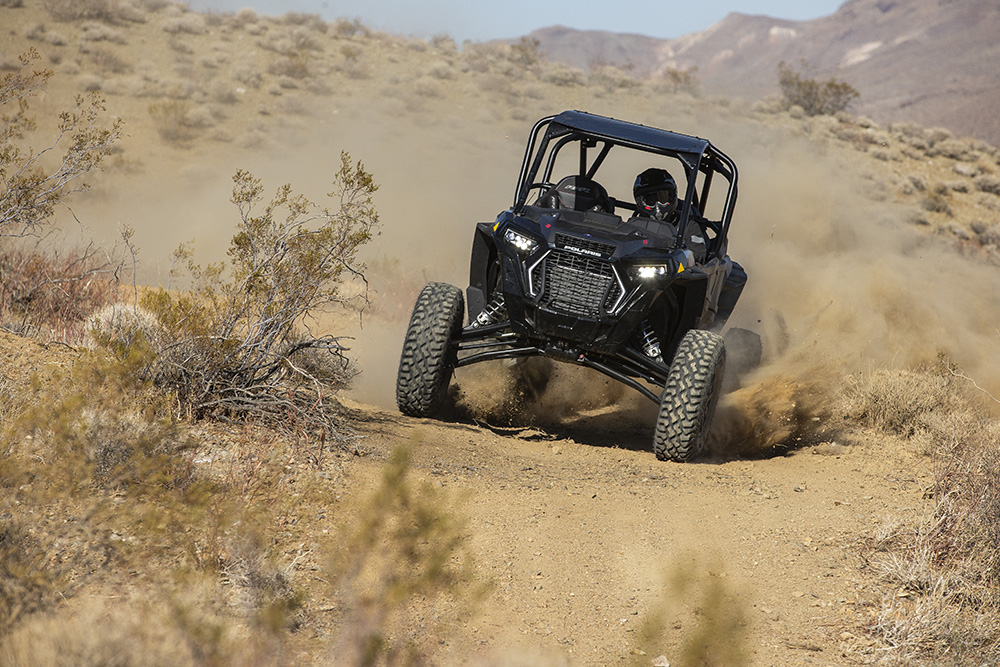The current, non-PRO Polaris RZR XP has been around for the better part of a decade now. How crazy is that? Polaris has continually improved upon the first XP platform over the years, and we have been lucky enough to slide behind the steering wheel of every iteration. The Turbo S models released a few short years ago dials the car up to 11 in many of the right categories, but it also highlights some weaker spots in the aging XP platform. So, just how well does this $31,000 super-UTV justify its massive price tag?
2021 Polaris RZR Turbo S4 Review
Words: Cody Hooper // Photos: Brad Howe/Adam Campbell
MSRP: $30,999
2021 Polaris RZR Turbo S4 Review
Highlights:
-Terrain-devouring suspension
-Great ground clearance
-Available with or without the electronics package
-Massive aftermarket and local parts network
-The best version of this chassis Polaris has made yet
Engine:
The RZR Turbo S 4 uses Polaris’s own ProStar 925cc parallel twin engine, designed for and fitted with a factory turbocharger. It uses a four valve per cylinder, dual overhead cam design with EFI and a host of very intricate sensors to help it run smoothly. Polaris’s ProStar engine develops 168 horsepower at the crank at 14 pounds of boost, and most cars make between 120-130 wheel horsepower on a chassis dyno.
Unfortunately, the almighty Turbo S 4 isn’t the RZR with the highest horsepower rating from the factory stable (at the time we write this). Polaris offers the new-ish Pro XP, which is rated at 181 horsepower and uses a very similar version of the engine in the Turbo S in a different chassis. If you’re the type that doesn’t plan on ever using Polaris’s factory warranty, a simple aftermarket tune for under $1,000 will get your Turbo S far past the Pro XP’s power levels.
Transmission/Drivetrain:
Polaris utilizes their PVT (CVT) transmission in the Turbo S cars. While there are plenty of rumors running around about a new beltless transmission coming from Polaris soon, today you can only get one with a belt. Luckily, this one puts the power down very well. The clutch engagement is smooth and linear, even with turbocharged power. Always carry a spare belt and the tools to change it, because this is also the second-heaviest RZR they make. Polaris has made clutching improvements to the 2021 model year Turbo S models that they say will result in longer belt life.
Like any CVT, the Turbo S 4’s engine mates to a pair of mechanical clutches linked by a large, ribbed drive belt. It is an offshoot of snowmobile and ATV technology that dates back decades. It makes for an easy driving experience with no physical shifting required besides choosing high or low gear when you set off. Low gear should be used for any steep climbs or low-speed, high load driving, such as rocks, slow sand sections, mud, etc. Get in the habit of shifting to low gear when you should use it, as it will save you a couple of belts in the long run.
Polaris has had a lot of time to perfect the CVT transmission, but we cannot help but feel like there is still room for improvement. Sudden throttle changes at low speeds often result in some loud clunking from the driveline as the clutches engage and disengage. Once you are moving, the transmission is seamless and always delivers a hard shove when you mat the throttle. Top speeds of 80+ mph are easily achieved with enough runway. In the end, the CVT transmission is easy to use, but it feels like the last piece of the RZR that needs to step into the next generation.
Suspension:
Here is where the Turbo S 4 really gets to shine. Starting with the XP 4 Turbo platform, Polaris engineers redesigned the suspension system of the 64” wide cars to create this 72” wide, long-travel beast. After frame reinforcements, significant gusseting, and some enlarging of parts and hardware, the Turbo S 4 is 250 American pounds heftier than the non-S XP Turbo 4 seater. This means that stock for stock, you will lose a drag race to a 64” XP Turbo in your 72” Turbo S.
If that’s the kind of thing that matters to you, then you’re likely looking at the wrong machine – the Turbo S is not the quickest car Polaris will sell you, nor is it the outright fastest 4 seat UTV on the market. The Turbo S was built to take a beating from Mother Earth so its passengers can ride at ridiculous speeds across horrid terrain in total comfort, and it absolutely excels at its mission.
Up front, insanely long dual A-arms control 19 inches of front wheel travel. From the factory, the car’s front end is set up far too soft for our liking, so we added about a half inch of preload to get the car to sit up a bit under braking and when aimed downhill. In the rear, Polaris’s signature 3-link trailing arm design is employed and enlarged to allow an outstanding 21 inches of suspension travel. That’s neck and neck with Can-Am’s Maverick X3, although it gives up a couple inches on paper. In feel on the trail, they are very close.
Polaris and Fox have been working on intelligent shock technology for years, and the Turbo S employs their Live Valve smart suspension system with 3 selectable modes. This means that you can tune your suspension’s stiffness with the literal flick of a switch, right there on the dash next to the 2WD/4WD selector. Three preset “maps” for the shocks allow tuning without even unbuckling your seatbelt. Welcome to 2021.
Three selectable modes allow the driver to dictate how mushy he or she wants their ride quality. Putting around with the kids? Leave it in comfort. Hitting the trail with some friends? Stick it in Sport mode to firm up the ride and keep body roll in check. Want to hang the back end out at 60 mph in a full-lock drift before you hammer down a deep sandy whoop section? Throw it in firm for incredible bottoming resistance! It is a genuinely nice feature that makes a noticeable difference, and one that you won’t find a gimmick as an owner of the vehicle.
Polaris’s Turbo S with Live Valve is void of any external shock adjusters for compression or rebound damping, as the computer-controlled solenoid system takes place of those features. The 2.5” body front and 3.0” body rear shocks do offer preload and crossover adjustability. The RZR has a dedicated electronic control unit for the suspension that takes into account speed, steering angle, throttle/brake position, G force/acceleration, and more to precisely control shock stiffness during your ride. While not yet shock-position sensitive, the system has enough data inputs to make a well-informed decision about how stiff it should be, leading to a great ride and quite an impressive and useful feature set.
Tires/Wheels/Brakes:
Pushing the wheels away from the bodywork of the car allowed Polaris engineers to fit massive 32-inch-tall ITP Coyote 8-ply desert tires to the Turbo S’s lanky limbs. Unique 8-spoke Polaris star pattern wheels grace the Turbo S, and while they look nice, they do lack beadlock functionality. At this price, that’s a hard pill to swallow. The ITP tires do a wonderful job of providing traction in intermediate terrain, but they don’t offer a ton of lateral grip when sliding. Some testers mentioned that the tire’s square profile hampers cornering grip at the limit, and we tend to agree. The tires are great for stock meats, but they don’t offer a ton of side bite. This is exaggerated by how much the long Turbo S 4 plows at very low speeds in looser terrain- turning around in the sand requires significant real estate or significant wheelspin, neither of which are ideal in certain situations on the trail.
Polaris upsized the Turbo S brakes, using three piston front and two piston rear calipers. Factory stainless braided brake lines keep the pedal travel firm and squish-free. The extra clamping force afforded by the upsized calipers and rotors is much appreciated with the massive tires and hefty chassis. The RZR’s brakes will lock up all four tires if you stomp them hard enough, and the rear-biased feel is great for trail braking on corner entry. Overall, the brakes get an A+.
Interior & Exterior:
The Turbo S interior at the Live Valve trim level is packed with features that make it feel more upscale. A 7” Ride Command digital display takes up the center of the dash and brings a massive amount of functionality to the RZR. Here’s a rundown of the top available features:
- Dynamix Visualizer/Control
- Digital Instrumentation
- Built-In GPS
- Topographic Mapping
- Bluetooth Phone/Audio
- USB Smartphone connectivity
- AM/FM & Weather Radio
- In-Vehicle communication ready (headsets sold separately)
- Speedometer/Tachometer
- Odometer/Tripmeter
- Engine Parameters/Temperatures
- Diagnostic Code Reader
- Music Controller
- Backup Camera
- Front Camera Ready
This particular Onyx Black Turbo S 4 comes factory with a 2-speaker MB Quart stereo (more speakers can be added later) and a factory backup camera. While useful, especially when belted in, the backup camera is very low-resolution and a couple steps behind a modern street car’s camera quality.
The Ride Command system is very easy to use and can even be operated with gloves on. Having access to all of this connectivity will not be important to some people, which is why Polaris will sell you a Turbo S 4 Velocity Edition for a whopping $5k savings! The “base model” Velocity package is equipped with Walker Evans Velocity Series shocks instead of the Fox Live Valve units, and it is also stripped of the Ride Command digital display, speakers, and everything that comes with the digital dash. It even loses the wonderful Polaris/Grant leather-wrapped steering wheel, the aluminum roof, factory lower door panels, and a few other creature comforts. You’ll take a downgrade in comfort and convenience, but the RZR’s structural and suspension improvements are all there, making the Velocity Edition Turbo S a great buy.
If you have sat in a RZR XP before, this cabin won’t shock you. While Polaris has added some extra storage compartments to the dash, the rest of the car’s cabin is the same as every RZR before it, save for some nice upscale touches like the leather-wrapped Grant steering wheel. The cabin is cramped for taller riders, and the seat bases are noticeably short. The RZR’s seatbacks are not very secure, allowing a lot of side-to-side flex, especially with taller or heavier riders. The “Subzero” H-shaped harnesses do a better job of securing occupants than a standard 3-point but are still miles off the comfort of a true 4- or 5-point harness. The simple yet expensive fix is to add aftermarket seats and harnesses, but with a starting price north of $25,000, the factory hardware should be higher grade.
Impressions:
Big suspension and big horsepower equate to massive smiles in the Turbo S 4. Living up to its Porsche-esque name, it is a true performer in its intended environment. Big rocks, trail debris, whoops as deep as your tires are tall- you name it, and the Turbo S gobbles it up with a smile. Having this much suspension travel really highlights how playful the RZR Turbo models are. While not tuned for surgical precision, they sure do work when you swing the hammer hard. Put your foot to the floor and aim for the choppy stuff, because that’s where the Turbo S wants to spend its time.
This is the most solid-feeling RZR 4 seat unit we have ever driven, the whole seemingly made better by the sum of its parts. The suspension feels incredibly compliant, and changes to the Dynamix system’s dash-mounted rocker switch respond with instantaneous shifts in damping for the car’s almost bottomless suspension. The 4 seat unit’s long wheelbase adds another layer of stability at speed over the 2 seat units, as well as more comfort in hard rear-wheel impacts. Simply put, it does a wonderful job at dancing through the roughest of terrain.
The Turbo S 4 is an absolute bomber on the fire roads, where its wide stance and high horsepower work together to create the perfect package for 2WD full-lock drifting. The RZR changes direction with surprising agility, and feels more stable than most, even when at the limit. This is a fantastic-driving car, the ultimate expression of this version of the Polaris RZR. If you look all the way back to 2014 when the RZR XP 4 platform was first released, you can see that the DNA is the same. Sit behind the wheel of both cars, however, and you will feel a million miles of R&D time worth of difference. The new RZR Turbo S 4 is the best 4 seat RZR Polaris has ever put out, and we cannot stop driving it.


